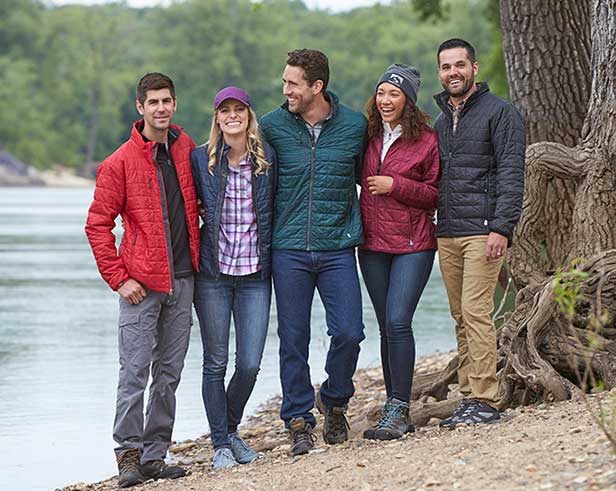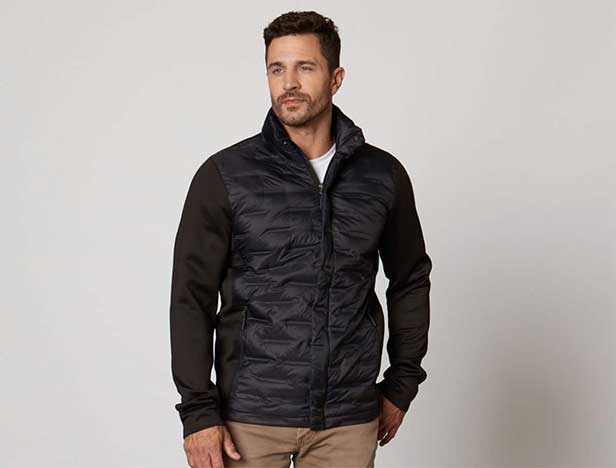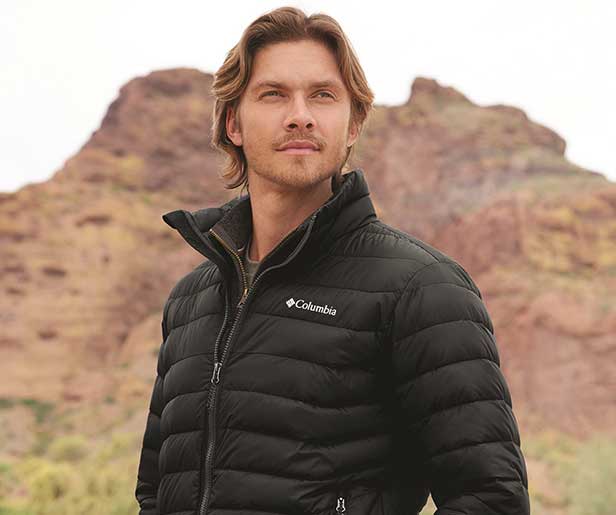Product Hub November 20, 2019
Trend Alert: Puffer Jackets Are a Fashion Staple
Quilted outerwear serves as both a functional piece and streetwear statement.
The puffer jacket has become a ubiquitous sign of slipping temperatures, with everyone from snow bunnies to streetwear fashionistas sporting the cozy style – and that’s not even getting into runway iterations of the trend, like those outrageous outerwear ball gowns Moncler is dreaming up. North Face product director Michael Horsch has even given our puffer predilection a name: “outleisure.”
The idea for the modern-day puffer was born way back in the 1930s, after adventurer Eddie Bauer nearly died from hypothermia when his wool jacket became waterlogged and froze. He filed for a patent for his quilted, down-filled jacket in 1940. For decades, puffer jackets were all about utilitarian needs, keeping outdoorsy types protected from the elements. In the 1990s, however, they gained a cool factor in hip-hop culture and as streetwear. Now, of course, the puffer is everywhere. “It’s become a cultural piece that offers functionality and fashion, much like the rise of the Timberland boot,” says Christina Marcantelli, inside sales representative for Top 40 supplier S&S Activewear (asi/84358).

Puffer jackets, like this array offered by Storm Creek, come in a variety of styles and colors.
These days, there are way more options for puffer jackets than ever before, from long and belted to cropped and collared, in every color of the rainbow. “The versions are endless and go beyond the look of a ‘marshmallow puff,’ ” Marcantelli says.
Advancements in quilting machine technology have also enabled outerwear designers to offer new stitch-line patterns to change up the look of a jacket without compromising its strength and integrity, according to Doug Jackson, founder and president of apparel supplier Storm Creek (asi/89879).

This men’s hybrid down jacket (1555) from Fossa Apparel features heat seal finishing, rather than stitching to ensure the down fill stays intact.
Smaller and narrower bands of quilting are currently more in vogue “than the bigger, blocky patterns,” says Eric Chen of supplier Fossa Apparel (asi/55141). Some companies have even eschewed traditional quilting all together, in favor of heat seals, he adds, which has the advantage of keeping down feathers from escaping through tiny stitch holes.
As far as the guts of a puffer, down is considered the premium insulation option, Chen says: “The natural properties of goose feathers provide some terrific insulation that polyfills just can’t quite match.”
Plus, Marcantelli says, down has a better fill power and makes for a lighter, but warmer jacket. “If you’re looking for a lightweight, packable option, buying a puffer with feather down is the best choice,” she says.

This Columbia Powder Lite jacket (169800) is available from S&S Activewear.
Still, down tends to be more expensive than synthetic polyfills. The material also raises allergy and animal-rights concerns, says Andrea Routzahn, senior vice president of portfolio and supplier management at alphabroder (asi/34063). And, Jackson notes, down doesn’t perform well if it gets wet, an issue that doesn’t affect synthetics. Storm Creek uses the branded insulation, Thermolite, in its jackets, which Jackson says provides better warmth than generic insulation.

This North End puffer jacket (NE708) from alphabroder (asi/34063) is insulated with synthetic down.
The other aspect of functionality that’s critical for puffer jackets is the shell itself. “A good puffer must be water-resistant and wind-proof,” Jackson says. “Wind is the biggest ‘chilling’ factor for people outdoors.”
Thanks to the versatility and variety of puffers, the pieces needn’t be relegated merely to winter weather. Lighter jackets and vests can sometimes be worn all year long. “Our Colorado customers will wear a puffer vest and a T-shirt in the summer, and our northern customers can get through a cold winter with our 120-gram insulated jacket,” Jackson says. “To illustrate this point at our annual retail outdoor show one year, a very high-end outerwear vendor showed a mannequin in a bikini and puffer vest.”

Product Hub
Find the latest in quality products, must-know trends and fresh ideas for upcoming end-buyer campaigns.
